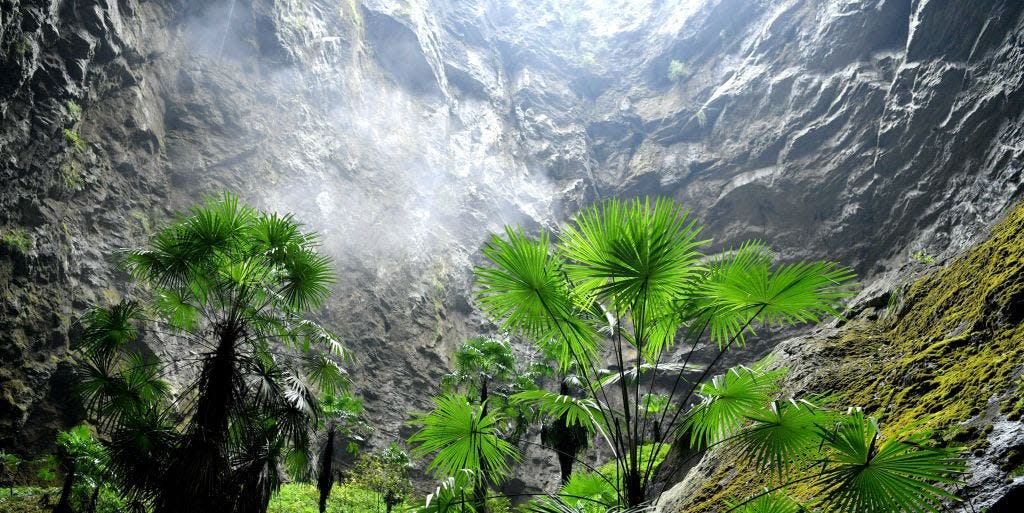Here’s a Gorgeous, 630-Foot-Deep Sinkhole You Can Admire Instead of Fear

A sinkhole in southern China is part of the karst landscape, shaped by water and a home for trees, plants, and animals.
A team exploring the three cave entrances and sinkhole floor are looking for any new species that might live there.
Sinkholes are created when water erodes the bedrock beneath the surface.
Sinkholes can be terrifying, especially if one opens up directly beneath you. Consider the 2016 monstrous pit that made a section of five-lane highway suddenly disappear in Fukuoka, Japan, in 2016.
But they can also be wonders of nature, like this unexpectedly verdant, sunken forest in southern China shows. The enormous pit, 630 feet deep, is home to a lush green haven of tall, ancient trees, dense undergrowth and probably, say researchers, animals that haven’t yet been found elsewhere.
The discovery didn’t shock a team of speleologists (who study caves) and spelunkers (who rappel into them for fun) exploring the sinkhole. The Chinese team descended into its depths on May 6. They found three cave entrances in the chasm, which measures 1,004 feet long and 492 feet wide. “I wouldn't be surprised to know that there are species found in these caves that have never been reported or described by science until now,” the expedition’s team leader Chen Lixin says in a news release about the discovery.
A sinkhole as massive as this one in the Guangxi Zhuang Autonomous Region is called “tiankeng,” a Mandarin name meaning “heavenly pit.” Sinkholes that open suddenly in the ground are a feature of karst topography, an endemic part of the local landscape here. Bedrock dissolves as rainwater streaks through soil and becomes increasingly acidic with carbon dioxide during its journey. Gradually, the acidic water opens up widening tunnels in the bedrock, which can morph into hollowed out cave chambers. Eventually, the ground just falls in, opening a sinkhole.
Variations in the local geology, climate, and other factors affect the way a karst appears at the surface, says international cave expert George Veni in a news release. Veni is the executive director of the National Cave and Karst Research Institute (NCKRI) in the U.S. and was not personally involved in the expedition. “So in China you have this incredibly visually spectacular karst with enormous sinkholes and giant cave entrances and so forth. In other parts of the world you walk out on the karst and you really don’t notice anything. Sinkholes might be quite subdued, only a meter or two in diameter. Cave entrances might be very small, so you have to squeeze your way into them.”
This particular sinkhole isn’t the only one in the world teeming with life. In fact, one West Texas cave supports copious tropical ferns, thanks to migrating bats that carried the fern spores with them on their way to South and Central America. In the United States, 25 percent of land is karst, carved by water, or pseudokarst, carved by volcanics or wind, Veni says. About 20 percent of the world's landmass is made of karst landscapes, with China boasting the largest sinkhole in the world. Discovered in 1994, an underground river in a forest hollowed out this “double-nested” sinkhole and created a 2,000-foot waterfall inside it.
The spectacular karst formations in China have earned the region a UNESCO world heritage site designation. Visitors can find not only sinkholes, but also rock pillars and natural bridges there.
You Might Also Like

